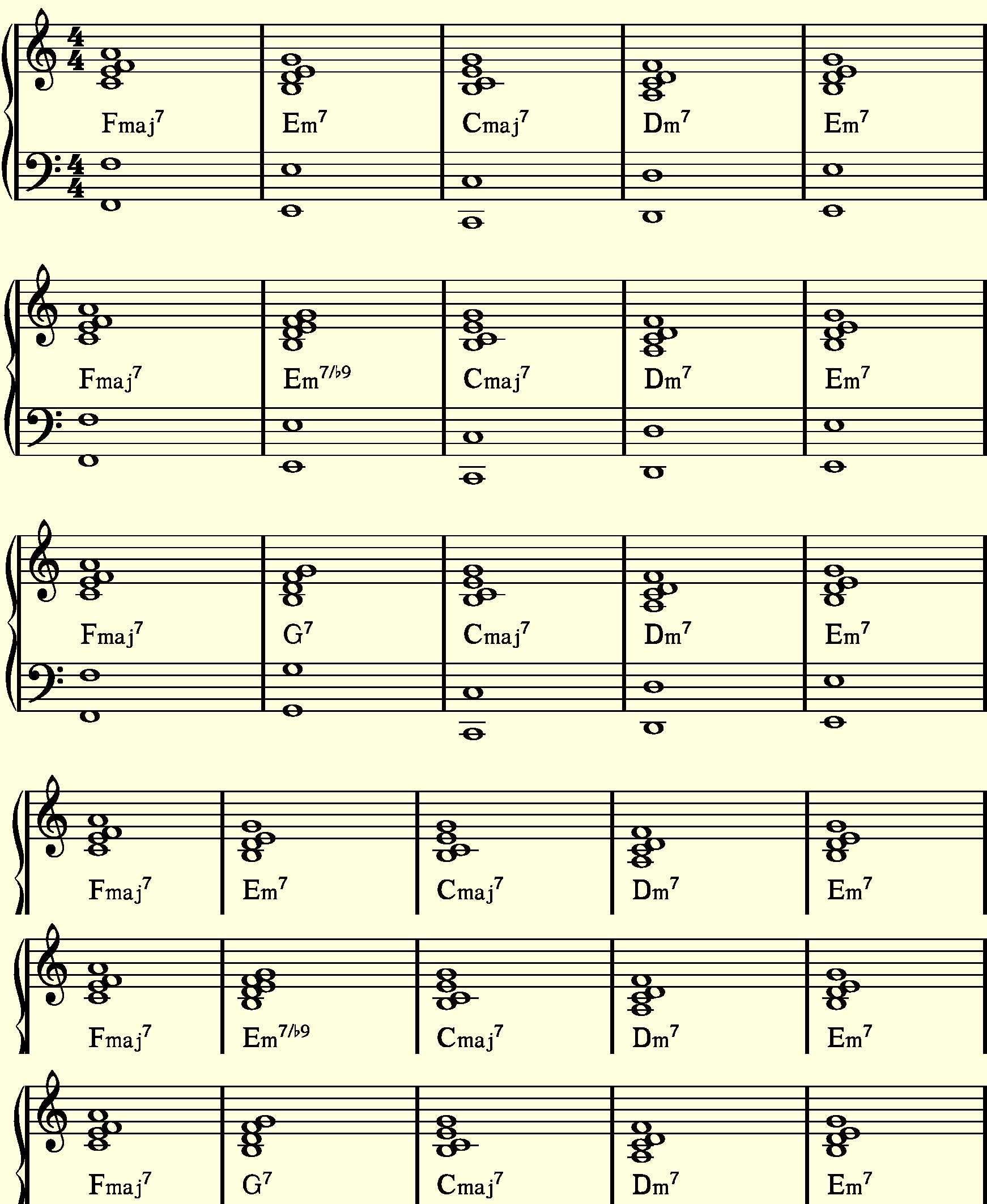D
Derrick Foreal
Guest
so im playing this Fma7-Em7-Cma7-Dm7-Em7 in 4/4, with a 4 bar loop but something about that Cma7 is not sounding right is it just my ear or does this not musically correspond.
so im playing this Fma7-Em7-Cma7-Dm7-Em7 in 4/4, with a 4 bar loop but something about that Cma7 is not sounding right is it just my ear or does this not musically correspond.

Hmmm, never heard of an Elisive cadence, must do some reading now... And when i play the Em7-Cma7 on guitar it sounds gorgeous, notes remain the same but position changes giving it a slightly different timbre. And I agree derrick, example 1 sounds best to me as well, fwiw...
The problem seems to be that you have the wrong perspective on music theory and its application. I don't think BC was trying to say that your chord progression was incorrect, but was trying to explain WHY it sounds odd to you and offering some suggestions. If its what you like, its what you like.See, i know bandcoach knows whats hes talking about but i also knoe sometimes theory can get in the way of musical expression and feel.
The problem seems to be that you have the wrong perspective on music theory and its application. I don't think BC was trying to say that your chord progression was incorrect, but was trying to explain WHY it sounds odd to you and offering some suggestions. If its what you like, its what you like.
Music theory isn't used to tell you what is right or wrong or validate creative expression, but how to make sense of what it is you're hearing.
Hmmm, never heard of an Elisive cadence, must do some reading now... And when i play the Em7-Cma7 on guitar it sounds gorgeous, notes remain the same but position changes giving it a slightly different timbre. And I agree derrick, example 1 sounds best to me as well, fwiw...
| F[sup]maj7[/sup] | Em[sup]7[/sup] | C[sup]maj7[/sup] | Dm[sup]7[/sup] | Em[sup]7[/sup] |
| A[sub]3[/sub] | G[sub]3[/sub] | G[sub]3[/sub] | F[sub]3[/sub] | G[sub]3[/sub] |
| F[sub]3[/sub] | E[sub]3[/sub] | E[sub]3[/sub] | D[sub]3[/sub] | E[sub]3[/sub] |
| E[sub]3[/sub] | D[sub]3[/sub] | C[sub]3[/sub] | C[sub]3[/sub] | D[sub]3[/sub] |
| C[sub]3[/sub] | B[sub]2[/sub] | B[sub]2[/sub] | A[sub]2[/sub] | B[sub]2[/sub] |
| F[sub]1[/sub] | E[sub]1[/sub] | C[sub]1[/sub] | D[sub]1[/sub] | E[sub]1[/sub] |
| F[sup]maj7[/sup] | Em[sup]7[/sup] | C[sup]maj7[/sup] | Dm[sup]7[/sup] | Em[sup]7[/sup] |
| A[sub]3[/sub] | G[sub]3[/sub] | G[sub]3[/sub] | F[sub]3[/sub] | G[sub]3[/sub] |
| F[sub]3[/sub] | E[sub]3[/sub] | E[sub]3[/sub] | D[sub]3[/sub] | E[sub]3[/sub] |
| E[sub]3[/sub] | D[sub]3[/sub] | C[sub]3[/sub] | C[sub]3[/sub] | D[sub]3[/sub] |
| C[sub]3[/sub] | B[sub]2[/sub] | B[sub]2[/sub] | A[sub]2[/sub] | B[sub]2[/sub] |
